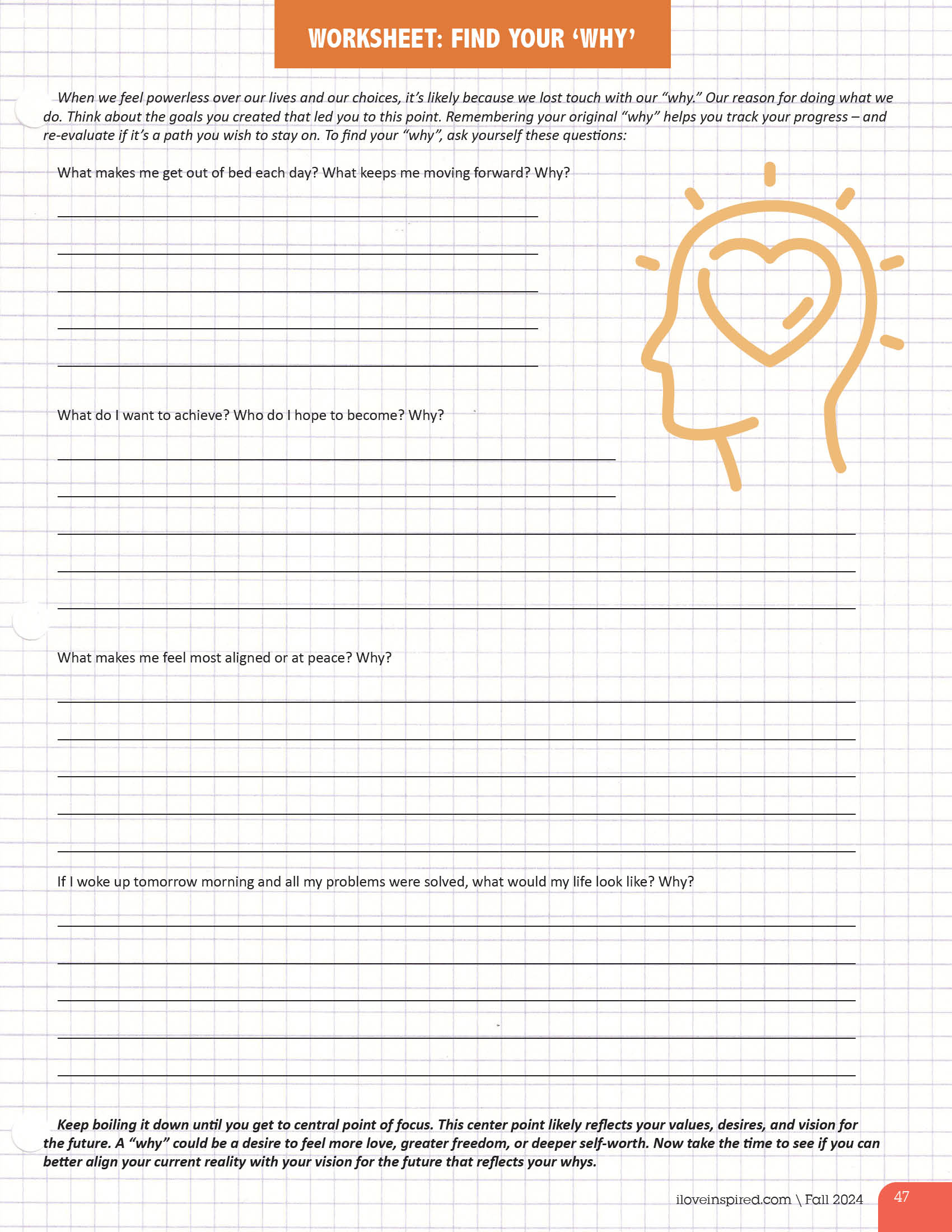Mental Health: Finding Hope
Autumn tends to evoke feelings of comfort. The crisp air beckons us outdoors – to pick seasonal fruit, appreciate the brightly colored foliage, or to simply enjoy the cooler temps. And then, as the sun sets earlier each day, we find ourselves retreating into the coziness of home.
Indeed, for some, this slowing down might feel like a welcome rest. For others, the thought of cold, short days ahead conjures up feelings of dread. There is no right or wrong way to feel, but the latter sure makes for a long season to come. Not only that, but when dread takes hold, we’ve likely lost touch with one very important feeling – hope.

Connecting to Hope
What is your reason for waking up in the morning? Try to think beyond the alarm clock and your obligations. When you boil it down, one simple (yet sometimes elusive) answer generally remains: We greet the day (pleasantly or not) because we hope for better things ahead.
Of course, life gets in the way sometimes. On the days when the alarm clock comes too soon, you run around putting out fires, or the quiet hours loom with loneliness, it’s important to dig deep in that search for hope.
Close your eyes and visualize what lights you up. Even the most mundane moments can be purposeful when we peek behind the curtain. Try to connect with what comes up. Maybe it’s a person. A feeling. An action. A dream. These can become your beacons to lead you back to hope.
The Power of Hope
Life is a constant ebb and flow. Whether we’re at the top of the mountain, living our best lives, or deep in the valley of dread, hope is the belief that brighter days are on the horizon… even when we have no proof.
Many times, when we experience moments of bliss or happiness – the top of the mountain – the journey becomes clear. We might not wish to relive the climb, but we sure can appreciate the view from the top. From this perspective, we can recognize how the challenges we overcame strengthened us.
Unfortunately, when we greet moments of pain or grief – when we’re in that valley – it’s hard to see where we’ve come from or where we’re headed. If we aren’t supported by others who can help us find our way, we can get lost in those feelings. The very nature of these emotions can make them feel insurmountable. Here is where we need the greatest dose of hope – a reminder that “this too shall pass.”

Find Hope in the Valleys
Major losses and hardships can alter the way we perceive the world and what we expect out of life. From within this space, it’s common for people to start feeling hopeless, scared, lost, angry, or empty. The greater the life disruption, the greater the emotional upheaval. Some might even come to consider this period of their life a “dark night of the soul.”
Here is the good news – from this place of darkness, we create our deepest sense of inner light. Here, we have the potential to develop resilience. This is where we stop looking outside of ourselves for answers and start looking within.
This is not a time for making any big decisions or changes. This is a time to pause and reflect. Start to look for areas of growth – both from your past and the potential for your future. It’s also important to take the time necessary to accept what life is… and let go of what you thought life would be. Then, you can start to reimagine new possibilities moving forward.
Thoughts of what is possible can blossom into hope. When those possibilities take shape, hope can transform into feelings of security, peace, gratitude, and confidence in oneself.
If you find yourself in the darkness of a valley, try to look within and keep going. Hope is closer than you think.
Remember Your “Why”
When we feel powerless over our lives and our choices, it’s likely because we lost touch with our “why.” Our reason for doing what we do.
It’s natural for humans to slip into ritual and routine. At one point, we probably made a choice that created our current circumstances. The power of habit allows those choices to cement into automatic behavior. This can be a blessing or a curse depending on the habits you’re currently engaged in and the goals you want to achieve.

Think about the goals you created that led you to this point. Remembering your original “why” helps you track your progress – and re-evaluate if it’s a path you wish to stay on. Keep asking yourself why you’re doing what you’re doing until you get to something that really resonates. Is this “why” still serving you? Still giving you hope? See the worksheet following this article for an exercise in “Finding Your Why.”
Appreciate Your (Often Hidden) Growth
Some of us might reflect on our past visions and realize we really are living out our dreams. We simply lost touch with gratitude along the way. If this rings true, it’s crucial that you take some time to appreciate your growth.
When we set intentions, we often imagine a picture-perfect future. Yet, when our manifestations become reality, they might not exactly match what we envisioned. This doesn’t mean we got it wrong. We simply need to recalibrate.
Look around and notice everything you currently embody or have (tangible and intangible) that you once wished for in one capacity or another. Bask in a feeling of gratitude – your hopes are actually coming true!
Make Meaning When You Feel Powerless
On the other hand, some of us might realize life threw us curveballs and we took a detour on the way. There’s nothing wrong with that either. Goals need to be flexible if we want to achieve success. The important thing is to make sure our actions are aligned with our “why.” If they aren’t, see if you can make adjustments – big or small – to get things back on track.
Here is where you get to be creative. You can make things personal, even when they’re not. When goals are assigned to us that feel meaningless or overwhelming, we can reshape them in our minds to match our “why.” This process will allow us to find the internal (or intrinsic) motivation to meet the day’s challenges.

Let’s say your boss assigns a huge project that doesn’t align with your skillset or desires. You might groan and avoid the task – overwhelmed by everything that needs to be done. However, let’s say your “why” relates to personal growth and success. You can reframe this challenge into an opportunity to tap into your growth mindset and learn something new. When you have the intrinsic motivation to face the task ahead, it suddenly feels purposeful (even hopeful).
This is a simple reframe, but when we connect to the bigger picture, relating our daily to-dos to a larger “why,” we regain a sense of control over our lives. This process can help us find meaning in the mundane.
A Beacon of Hope
It’s ok if you’re still struggling to access feelings of hope. Acknowledge that you might currently be deep in a valley. Sometimes, we have to accept the emotions in front of us before we can find the hope they conceal.
When all hope feels lost or you can’t see a bright path ahead, it’s important to seek help. A professional therapist can help you begin to process your feelings.
The biggest step is the first one. Then you keep moving forward. Seek out those pinpricks of hope that shine like stars in the darkness. Even if you only catch one for a fleeting moment, peaking through the clouds, take a moment to let it sink in and serve as a reminder that brighter days are ahead.

Olivia Lynn Schnur













